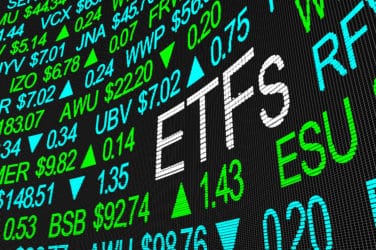
With investors piling out of bonds, dealers are being challenged to cope with the rush of sell orders, with the resultant lack of liquidity leading to a hike in bid-ask spreads.
MarketAxess’ Bid-Ask Spread Index (BASI), which provides a snapshot of liquidity in the U.S. corporate bond market, shows a marked upturn over the past several weeks, coinciding with Fed chairman Ben Bernanke’s statements that the central bank could begin tapering its quantitative easing policy as early as this year.
MarektAxess created BASI in order to provide institutional investors with a more accurate gauge of current and historical levels of liquidity in order to guide their portfolio decisions.
“One of the questions we frequently get from our clients is whether we could help them measure and quantify levels of liquidity in the corporate bond market,” said Alex Sedgwick, head of research at MarketAxess. “In order to make better informed trading decisions they want to understand, for example, how liquid the market is today compared to during the credit crisis.”

Alex Sedgwick, MarketAxess
Under normal market conditions when dealers can use their balance sheets freely to support market making for clients, the bid-ask spread is generally narrower, reflecting both a lower inventory risk for dealers and lower trading costs for investors.
However, during periods of increased volatility, dealers tend to buy at lower prices and sell at higher prices and bid-ask spreads tend to widen, reflecting the increased risk and transaction costs.
The BASI has been developed for US high grade, high yield and emerging market bonds and can also be broken down by trade size bucket.
On a historical basis, BASI provides a much-needed benchmark that shows that the credit markets are far more liquid than during the height of the credit crisis, but less so than they were pre-cries. “We wanted to create an objective, quantifiable benchmark against which we could measure liquidity over time and across credit instruments, to help inform our clients’ market research and analysis,” Sedgwick said.
U.S.-listed bond mutual funds and exchange-traded funds have lost an all-time record $61.7 billion in June through Monday, June 24, according to TrimTabs Investment Research. This outflow far exceeds the previous record monthly outflow of $41.8 billion at the height of the financial crisis in October 2008.
The unprecedented liquidation of bonds this month is a dramatic departure from recent trends. Before June, bond funds had posted inflows for 21 consecutive months.
TrimTabs attributed the selling to a combination of steadily rising yields and hints from global central bankers that monetary stimulus may be scaled back in the future.
“Until this month, investors were piling into all sorts of exotic credit instruments with little regard for value, confident that endless central bank liquidity would inflate prices,” said David Santschi, CEO of TrimTabs. “The massive selling at the mere suggestion that this liquidity might diminish shows the degree to which central bank intervention is driving the markets.”
Because buy-sell data was not available from Finra Trace until 2008, MarektAxess has displayed the BASI data in 2 different ways.
From 2001 to the present, BASI is plotted using MarketAxess trade data and represents the average bid-ask spread just for electronic trades on the MarketAxess platform over the period. Starting in 2008, BASI is also compiled from Trace data and represents the average bid-ask spread in the market as a whole.
“The difference between the two charts is equivalent to the difference in bid-ask spread achieved through electronic trading compared to the spread in the overall market,” said Sedgwick. “It is clear by comparing these two indices that consistently tighter bid-ask spreads are achieved when trading electronically.”
In a research note, TrimTabs said that bond yields are likely to stabilize or even decline over the near term. Fund investors tend to be wrong, particularly when their behavior becomes extreme.
“The ferocity of the recent selling does raise longer-term concerns,” said Santschi. “How many of the investors who pumped a record $1.21 trillion into bond funds from 2009 through 2012 have experienced a rising interest rate environment? And how will they react when they get their quarterly statements in a couple of weeks and see that their ‘safe’ bond funds are delivering losses?”






